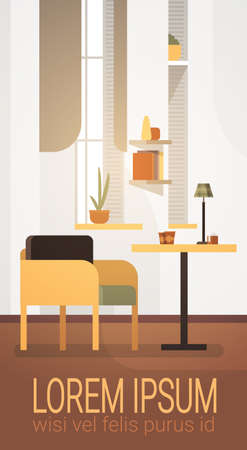Historical Perspectives on Desk Placement
The arrangement of desks in British offices and study spaces has long been shaped by a blend of tradition, practicality, and cultural ideals. Tracing back to the Georgian era, libraries in stately homes were often designed with grand windows and carefully placed desks to maximise natural light and foster intellectual reflection. These early layouts reflected both the Enlightenment’s emphasis on rational order and the British appreciation for harmonious surroundings. Moving into the Victorian period, workrooms and studies became more widespread as literacy rates soared and administrative professions expanded. Desks were frequently positioned near fireplaces or bookcases, symbolising both industriousness and scholarly aspiration. The typical orientation was not arbitrary; it was informed by prevailing beliefs about productivity, privacy, and even moral character. Thus, from the panelled libraries of Georgian mansions to the bustling clerical offices of Victorian London, traditional British architectural and cultural norms have left a lasting imprint on how workspaces are conceived and arranged to this day.
2. Modern UK Office Design Trends
In recent years, British workplaces have witnessed a transformation in desk orientation, reflecting both global influences and unique local sensibilities. Traditional cellular offices with fixed desks have given way to more dynamic arrangements, embracing open-plan layouts, coworking environments, and flexible workspace strategies. These changes are not merely aesthetic; they are grounded in research on productivity, collaboration, and well-being—issues that resonate strongly within the UK’s diverse working culture.
Open-Plan Layouts: Embracing Collaboration
Open-plan offices are now commonplace across Britain, particularly in sectors like technology, media, and creative industries. Here, the orientation of desks is often designed to foster teamwork while maintaining personal comfort. Desks are typically arranged in clusters or benching systems that promote spontaneous interaction but may also include acoustic panels or breakout spaces for moments of quiet focus.
Coworking Environments: The Rise of Shared Spaces
The growth of coworking spaces in cities such as London, Manchester, and Edinburgh has introduced new trends in desk orientation. Flexible seating arrangements encourage networking among members from different organisations. Hot-desking—where individuals choose any available workspace each day—is a hallmark of these environments, supporting both autonomy and community engagement.
Flexible Workspace Strategies
Modern British offices increasingly prioritise adaptability. Companies implement agile working policies that allow employees to select workstations based on their tasks or preferences. Desk orientation might shift daily, influenced by natural light, proximity to collaborative zones, or ergonomic considerations. This flexibility supports diverse workstyles and helps maximise the use of available space—a particular concern in high-demand urban locations.
Comparison Table: Desk Orientation Approaches in UK Workspaces
| Workspace Type | Desk Orientation Style | Main Benefits | Common Challenges |
|---|---|---|---|
| Open-Plan Offices | Clustered or Benched Desks Facing Each Other | Enhanced collaboration, shared resources | Noise levels, potential distractions |
| Coworking Spaces | Hot-Desking; Flexible Seating Orientations | Diverse networking opportunities, adaptability | Lack of personalisation, limited privacy |
| Agile/Flexible Workspaces | Moveable Desks; Task-Based Placement | Optimised comfort and productivity | Coordination required for booking spaces |
A Modern British Perspective on Desk Orientation
The British approach to desk orientation balances tradition with innovation. While contemporary trends favour openness and flexibility, there remains an underlying respect for individual needs—a legacy of the UKs longstanding appreciation for privacy and personal space. As office design continues to evolve, the challenge lies in creating environments that serve both collective goals and personal well-being.

3. The Science Behind Desk Orientation
Modern research into desk orientation reveals a fascinating interplay between environmental factors and human well-being, particularly within the context of British offices and study spaces. In the UK, the unique combination of weather patterns, daylight hours, and work culture has shaped both practical and psychological approaches to workspace design.
Natural Light: A Vital Element
Exposure to natural light is widely recognised as essential for both physical health and mental alertness. Studies conducted in Britain highlight that workplaces with desks positioned to maximise daylight—typically near windows facing east or south—report higher levels of employee satisfaction and concentration. With the UK’s often overcast skies and shorter winter days, capturing every available ray becomes especially important. British architects and office planners therefore prioritise window access in layouts, as even brief exposure to natural light can boost mood and mitigate the effects of seasonal affective disorder (SAD).
Ergonomics and Productivity
The science of ergonomics underlines the importance of desk orientation for comfort and efficiency. Research from leading British institutions shows that facing away from direct glare while maintaining a view of communal areas promotes better posture and reduces eye strain. Adjustable chairs, monitor stands, and careful positioning relative to windows are all part of a holistic approach to workplace wellness. In UK offices, it is common to arrange desks so that workers benefit from indirect light and minimal screen reflections, supporting sustained focus throughout the day.
Adaptation to British Work Habits
Britain’s work culture places great value on both individual productivity and informal collaboration. As such, many offices favour “hot desking” or flexible arrangements that allow for personal preference in desk orientation. Research finds that when employees are able to select their preferred position—whether facing a window for inspiration or turning towards colleagues for easier communication—they report higher engagement and reduced fatigue. This adaptability reflects a broader trend in British workspaces: balancing tradition with evidence-based innovation.
Summary of Key Findings
In summary, scientific insights tailored to the British context suggest that optimal desk orientation is not merely a matter of aesthetics or tradition—it directly influences well-being and output. By integrating natural light, ergonomic principles, and flexible layouts attuned to local habits, UK offices and study spaces create environments where people thrive.
4. Cultural Attitudes towards Workspace Arrangement
In the United Kingdom, the arrangement of desks in offices and study spaces is closely linked to broader cultural values. British customs surrounding privacy, hierarchy, and communication subtly inform the way workspaces are designed and used. Understanding these attitudes offers valuable insight into why certain desk orientations persist in both traditional and modern environments.
British Customs: Privacy and Professional Etiquette
Privacy is highly prized in British culture, often reflected in the preference for individual desks or partitioned spaces, especially within traditional offices. Open-plan layouts have gained ground in recent years; however, even in contemporary settings, subtle boundaries—like low screens or designated quiet zones—are common. The British approach seeks to balance openness with personal space, ensuring that employees feel respected and able to concentrate without undue distraction.
Hierarchy and Status in Desk Placement
The historical influence of hierarchy remains evident in many British workplaces. Senior staff are frequently allocated offices with doors or desks positioned to command a clear view of the room, symbolising authority while maintaining approachability. Meanwhile, junior staff tend to be grouped together, reinforcing team cohesion and accessibility but also reflecting their position within the organisational structure.
Communication Styles: Directness versus Discretion
The British preference for indirect or nuanced communication shapes workspace arrangements as well. Face-to-face desk placements may be avoided to minimise confrontation, while side-by-side arrangements are favoured for collaborative tasks without encroaching on personal space. This delicate balance between collaboration and discretion is a hallmark of UK office design.
Comparison Table: Key Cultural Preferences in Desk Orientation
| Aspect | Traditional Offices | Modern Offices |
|---|---|---|
| Privacy | Individual desks, partitions, enclosed offices | Low screens, quiet zones integrated into open plan |
| Hierarchy | Senior staff with private offices or corner desks | Subtle status markers like desk size or location |
| Communication | Desk arrangements minimising direct confrontation | Zoning for group work vs. focused individual areas |
| Etiquette | Clear boundaries respected by all staff levels | Flexible but still mindful of personal space |
The Enduring Influence of Tradition Amidst Change
The interplay between tradition and innovation continues to shape British attitudes towards desk orientation. While new trends champion flexibility and collaboration, deep-seated cultural values ensure that privacy, respect for hierarchy, and nuanced communication remain integral to how spaces are organised—blending the best of both worlds in uniquely British fashion.
5. Practical Considerations and Local Constraints
When considering the science and tradition of desk orientation in UK offices and study spaces, it is essential to acknowledge the practical realities imposed by typical British building layouts, historic architecture, and urban space limitations. Unlike modern international office blocks designed for flexibility, many UK workplaces and homes are situated within buildings that reflect centuries of architectural evolution.
Historic Architecture: A Double-Edged Sword
The charm of Georgian townhouses, Victorian terraces, or Edwardian conversions often comes with unique spatial challenges. High ceilings, sash windows, ornate fireplaces, and irregular room shapes can dictate how furniture—including desks—may be arranged. For example, a grand bay window might seem ideal for a desk facing outward to capture daylight, yet listed building regulations may prevent window alterations or the installation of blinds necessary for managing glare.
Urban Density and Space Limitations
Across many British cities, particularly in London and other major urban centres, space is at a premium. Narrow floorplans and small rooms mean that ideal desk orientations suggested by ergonomic science—such as facing natural light without backlighting computer screens—must often be compromised. The presence of multiple occupants in shared spaces further restricts layout options, necessitating creative solutions like floating desks or corner workstations.
Modern Adaptations Within Traditional Frameworks
Despite these constraints, British ingenuity shines through in adapting traditional interiors for contemporary needs. Modular furniture, adjustable lighting, and flexible partitions help optimise available space while respecting the character of older buildings. Ultimately, desk orientation in the UK is shaped as much by cultural heritage and local context as by scientific principles, resulting in a uniquely British blend of practicality and tradition.
6. Balancing Tradition and Innovation
When considering the optimal orientation of desks in UK offices and study spaces, it is essential to strike a harmonious balance between time-honoured tradition and the latest scientific insights. British workplaces have long been shaped by historical preferences—think of Georgian libraries with desks facing windows to capture precious daylight, or Victorian studies designed for privacy and contemplation. These traditions are not mere relics; they form an intrinsic part of Britain’s workplace heritage and cultural identity.
However, recent scientific research into ergonomics, lighting, and productivity offers new perspectives that cannot be ignored. For example, studies suggest that positioning desks perpendicular to windows can reduce glare and eye strain, while allowing natural light to enhance wellbeing. Open-plan arrangements, popularised in contemporary British offices, encourage collaboration but must be balanced with acoustic and visual privacy to prevent distraction.
Integrating Heritage with Modern Design
To successfully blend tradition with innovation, consider the architectural character of your space. In listed buildings or period properties, maintain original features such as sash windows or ornate woodwork as focal points, arranging desks to celebrate these elements without compromising on comfort or efficiency. In contrast, newer developments may allow for more flexible layouts that incorporate biophilic design principles—such as maximising daylight or introducing indoor plants—to boost both morale and cognitive performance.
Practical Guidance for UK Offices and Study Spaces
1. Respect Historical Layouts
Where possible, honour the building’s original intent by aligning workspaces sympathetically with its architecture.
2. Apply Evidence-Based Adjustments
Use current research to inform desk height, monitor placement, and seating orientation for optimum ergonomics.
3. Combine Old and New Aesthetics
Pair traditional furnishings—like antique desks or leather chairs—with contemporary lighting solutions for a unique British aesthetic.
4. Foster Wellbeing
Prioritise access to natural light and fresh air, echoing the longstanding British appreciation for nature within interiors.
Ultimately, the most effective UK office or study space will neither cling rigidly to the past nor chase trends blindly. By thoughtfully integrating scientific findings with Britain’s storied design legacy, organisations and individuals can create environments that are both inspiring and practical—a testament to the enduring value of balancing tradition with innovation.


